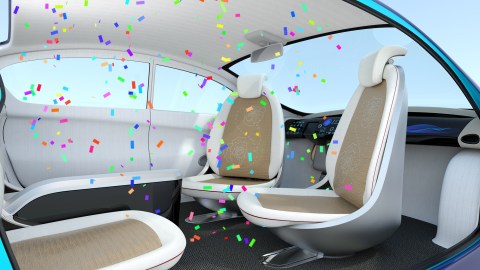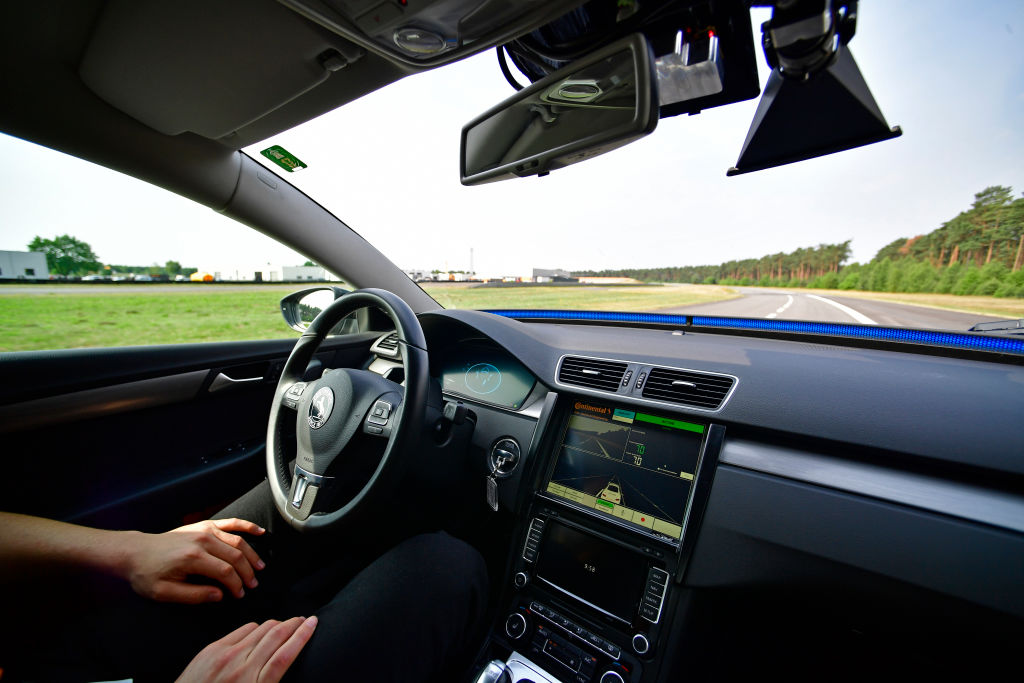15 Things You’ll Do In Your Driverless Car

Discussions of autonomous vehicles have become so commonplace that by the time driverless cars are widely available, the public’s excitement may be long over. Robotic cars have become as ubiquitous a feature on the evening news as the “incredibly cute pet” story. It is time to ask what might be the impacts of autonomous vehicles on business and society? And if driving is left to the robots, will we also be inventing a new ridership economy from the hours we gain being no longer at the steering wheel?
What will you be doing in your self-driving car? The Auto Insurance Center recently conducted a survey that asked that very question. While this is clearly not the first such study, and most assuredly will not be the last, the findings present some interesting data.
Here is the top ten list of activities that 2,000 drivers from around the world said they will do when they are freed from the wheel:
1. Read a book
2. Catch up with friends and family via phone
3. Get work done outside of the office
4. Watch a television show
5. Watch a movie
6. Eat
7. Play video games
8. Sleep
9. Engage in sexual activity
10. Pray
Apparently, carsickness is not enough of a problem to keep people from wanting to read in the car. A 2015 study showed that 72% of Americans reported reading at least one book over the previous year, – perhaps accounting for why reading is the number one activity future riders envision themselves doing during their robotic ride.
The survey suggests that talking to friends and family on our phones will increase when in self-driving cars. Furthermore, because it allows passengers the luxury of being able to take their eyes off the road, the car is set to become an entertainment hub for gamers and movie watchers. Instead of fuel economy or horse power, ‘our screen is bigger than their screen’ may become a new compelling measure by which to compare relative car value. Volvo jumped to the front of the in-vehicle entertainment line last year by announcing a venture with Ericsson to integrate the next ‘killer app’ to stream HD video to the car, giving the movie theater business one more competitor to putting ‘butts in seats’.

The drive-thru and fast casual restaurant businesses may also see market growth arising from the driverless car. Eating while driving has always been a common activity (note the ever growing number of coffee cup holders in new cars). Now imagine no longer having to hold the wheel with your hand (or even with a well-placed knee). This new freedom will likely result in vastly expanded menus with plated foods on easy to use vehicle trays and storage units. Food on-the-go may even get healthier. Breakfast, in particular, is likely to get a boost putting Starbucks, McDonalds, and others on notice that food behind the wheel is no longer a constrained luxury that must be a sandwich or in a cup.
A few of the listed activities lead to a chuckle, or stimulate some vivid imagery (note activity number 9). “Praying” made the list as #10. It is unclear as to whether praying onboard is due to a newly developing religious fervor or the amount of trust future riders have in the artificial intelligence powering their robotic chauffeur.
What the list does show is a distinct lack of imagination by tomorrow’s ‘riders.’ This is not an indictment of the survey respondents, but rather an indication of the amazing opportunity for business to create new rider experiences that are likely to become novel revenue streams for both service providers and the emerging autonomous vehicle industry.
How much would any business pay to have access to a consumer that has high-speed wireless connectivity but trapped for at least one hour a day? (note the average journey to work commute time in the US is about 30 minutes) Here are five services that will make it to a new top 10 list when autonomous cars, filled with connected, credit card carrying, strapped in consumers, flood the streets creating a new ridership economy.
On-Road Shopping – Online shopping just got a boost. Amazon’s Echo (a.k.a. Alexa) is already being integrated into Ford and Volkswagen. “She,” along with competing robotic assistants, will have a permanent spot on your dashboard capturing your imagination and newly found online shopping time. Brick and mortar may win as well – location based marketing for retailers will no longer be limited to tracking your smart phone at the mall, but may scoop you up from the road as well. Imagine Target, Nordstrom, or The Home Depot sending you personalized GPS-based marketing content to that in-vehicle widescreen compelling you to ask your autonomous car to take a hard turn to the store you overlooked only moments ago.
Smarter in 30 Minutes – Online education is growing, but the time available to learn is not. Get ready for MOOCS or Massive Open Online Courses to find a way into your car distilling classes into 25-minute learning sessions. Think credit-on-the-go that will be offered by for-profit education companies, such as Capella University, and leading non-profit university giants on edX. Pick up a certificate or an entire degree just by using the time going to work and back home again.
Me Time – All of us have seen (and probably have done) self-care behind the wheel. Self-care at high velocity already occurs – just think of the woman you passed putting on makeup at 60 mph or the reckless male with eyes glued to the mirror and shaving while merging into a traffic circle. Will Procter & Gamble or Estée Lauder, along with their retail partners, such as CVS and Walgreens, move your bathroom mirror and cabinet into the car? Always stocked, always ready, your branded self-care car console may replace your steering wheel – helping you get ready for work the morning or to freshen up for a Friday evening.
The Doctor is In…Your Car – While we are discussing self-care, why not healthcare? Given developments in the Internet-of-Things, and the growing capacity for tech devices to measure nearly every physiological function, the car might someday be able to serve as the site of a daily checkup. New partnerships between telecommunications firms, health service providers, and even insurers may provide nutrition consultations while you ride or possibly collect your weight, blood pressure, heart rate, and other factors that could indicate your overall wellness, level of stress, or fatigue. Rather than a frustrating commute, your car may become a platform of wellness services on wheels.
Home Work – After a day at the office, most people come home to another day of work. Cooking, cleaning, doing laundry. Why not get a jump-start on these tasks from the car? Designers have envisioned putting a washer and dryer in Ford Windstar minivans to meet the needs of supercharged soccer parents that wanted to do the wash while sitting on the sidelines. Seamless connectivity may make it possible for your autonomous car to connect to your smart house to warm up the oven or to even start dinner long before you arrive home.
While the vision of the driverless car is being promoted as a promise of unprecedented safety and seamless mobility, it will also free up trapped time for consumers to do other things. New technologies and creative business partnerships will deliver service innovations inside the vehicle producing an entirely novel platform of experiences that will transform how we connect with the world – this is the new ridership economy.





